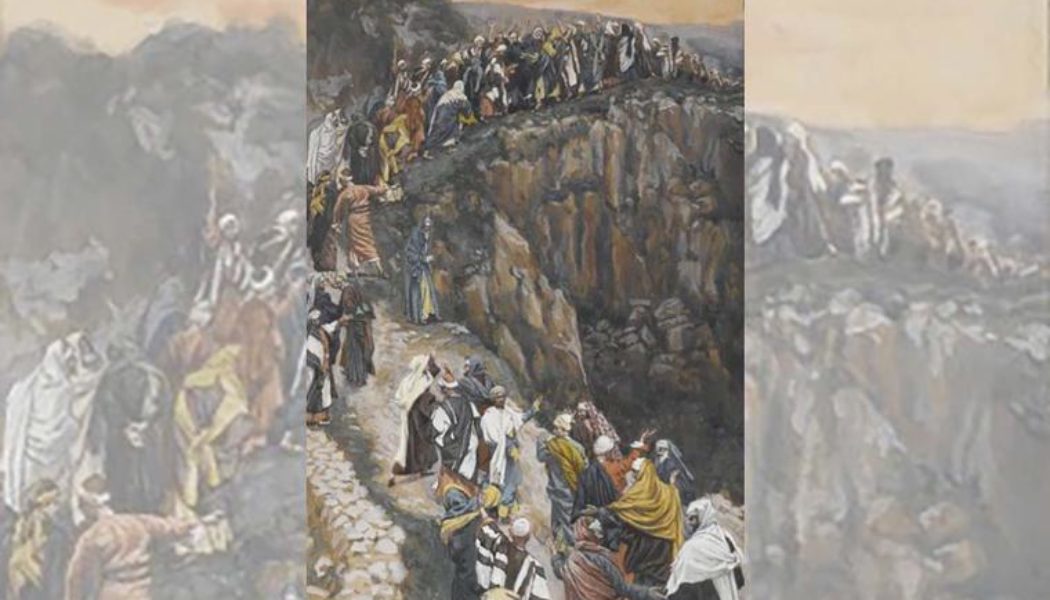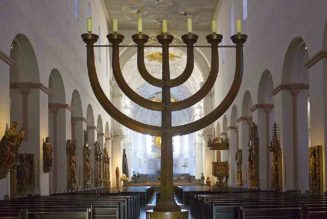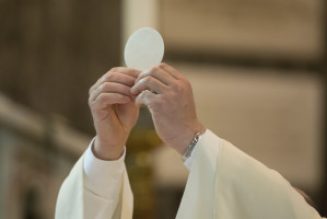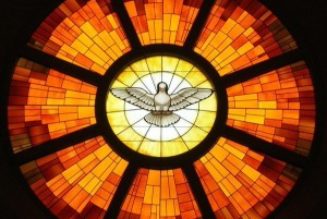
Last Sunday, Jesus proclaimed his identity (Messiah) and mission (liberation from sin) to the synagogue in Nazareth. This Sunday, we hear their reaction.
The Gospel picks up where it left off last Sunday: “Today, this Scripture passage is fulfilled in your hearing.”
Initial reactions are positive: “all spoke highly of him.” Soon, however, the mood sours.
At first, it’s a kind of envy: “Isn’t this the son of Joseph?” The poor carpenter’s kid? So who’s he think he is?
What they think they know of Jesus is, of course, mistaken. The First Reading already points to that. While Jeremiah is speaking of himself, chosen to be a prophet before he was even born, a vocation about which he was reluctant if obedient, the application of that text to Jesus has even greater meaning. Holy Mother Church is including Jesus in the prophetic line, anointed by God even before he was born. But, unlike Jeremiah’s merely human origins, Jesus is the Father’s Beloved and Chosen One to whom we should listen (as we were told three weeks ago) from all eternity, “begotten, not made, consubstantial with the Father.” The Father’s Mission for Jesus — like his designs for us (“before I formed you in the womb, I knew you”) — are eternal.
The episode of Jesus’ rejection at Nazareth is common to all three Synoptic Gospels (Matthew 13:54-58; Mark 6:1-6; Luke 4:14-30 ), but their chronologies of the event in Jesus’ ministry differ. Luke situates it at the start of Jesus’ public ministry, Mark and Matthew place it later. Without getting into the chronology issue, however, there are some common features. They include:
- a kind of local “uppity-ness” about Jesus (who does he think he is?), which the other Synoptics expand; and
- a lack of faith which inhibits Jesus from working any miracles in Nazareth, not because Jesus is powerless but because miracles are not “performance art.” They are rooted in and support faith, not supernatural trickery (as, for example, when Herod Antipas asks Jesus for a “miracle” when he means a “trick” — and jeers Jesus when he doesn’t get his audience request. See Luke 23:8-11).
There’s something about little towns with inferiority complexes. I come from Perth Amboy, a Rust Belt former industrial town in central New Jersey. It’s named after Scotland’s Earl of Perth, who had a role in its founding. Twenty years ago, being in Scotland, I made a trip to Perth to see whence my hometown roots came. Perth’s an attractive little town north of but between Edinburgh and Glasgow. Not knowing what to see, I approached some natives sitting at a bus stop, telling them where I was from and asking what they recommended about their town. I was surprised at their reaction, because it sounded like something I would have heard back in New Jersey: “You mean you came all the way from America to see this dump?”
One senses something of the kind in Nazareth. Remember, after all, that when Philip is called to be an apostle and decides to get Bartholomew (Nathanael) to come along and see “Jesus of Nazareth,” Bartholomew’s disparaging initial remark is, “Nazareth! Can anything good come out of there?” (John 1:43-46). So, if Nazareth didn’t rank high in peoples’ opinions, one suspects that someone they take as “local-kid-with-Messianic-complex” wouldn’t have been highly regarded, either.
This, of course, also the origin of Jesus’ famous saying about prophets not being respected in their own places.
In Luke’s account, however, Jesus gives as good as he gets, striking at the religious complacency of Israel, a certain spiritual smugness that presumed upon its chosenness to be somewhat jaded and complacent about what it witnesse with its own eyes and hears with its own ears. Jesus appeals to two Old Testament figures: the widow of Zarephath and Naaman the Syrian.
Elijah, the greatest of the Old Testaments prophets (which is why he appears, for example, alongside Moses during the Transfiguration), had brought a famine upon Israel because of its worship of false gods introduced by King Ahab’s foreign wife, Jezebel. Elijah excoriated that syncretism in God’s Name and eventually led to the killing of the priests of Baal. Because of this, Elijah had a price on his head and had to rely on divine Providence. One of the most extreme examples of that reliance was when God commands that he go to Zarephath — a foreign, pagan city — and rely on the person to whom he sends him. He sends him to a foreign widow with a son, gathering straws to cook a last meal from their meager flour ration before they die. God miraculously ensures that they run neither out of flour nor oil, sustaining the widow, her orphaned son, and Elijah. God’s protection comes through the hands of a foreign woman who puts her trust in the God of whom Elijah spoke (1 Kings 17:8-16).
Naaman is a Syrian military leader who has succumbed to leprosy. In the ancient world, leprosy was an excruciating and incurable death sentence. Responding to the entreaty of his Jewish servant girl to see Elisha, Elijah’s prophetic successor, Naaman agrees, probably on the principle “what’s there to lose?” Elisha somewhat blows him off, simply telling him to go and wash seven times in the River Jordan. Naaman, in turn, scoffs at the simple instruction, “as if the rivers of Syria aren’t any good!” His servants again, however, turn him around again with a kind of “what have you got to lose?” — and Naaman is healed, returning with gratitude to Elisha (2 Kings 5:1-19).
The people of Nazareth got Jesus’ message — two pagan foreigners showed more faith than they did. That’s when things turn ugly.
The synagogue was “filled with fury. They rose up, [and] drove him out of the town,” intending to push him over a cliff. But he “passed through the midst of them and went away.”
James Tissot, the 19th-century French artist whom we met last week, also captures this scene. “L’escarpement de Nazareth” [The Brow of the Hill Near Nazareth] depicts the moment when the crowd realizes Jesus has “passed through” their clutches.
Jesus is not in this scene. As one commentator noted, Tissot always paints Jesus in white. The one figure at the center of the painting, looking up at us, is not Jesus. Like the whole crowd, whose faces are “filled with fury,” that figure asks the question, “where’d he go?” How often, when with crowds are mad with fury does it lose sight – in this case, literally – of the cause of their anger? Lest we have any doubt about the stakes, the rocky ravine that takes up about two-thirds of this gouache watercolor and is outlined by that madding crowd from which Jesus is now, apparently, far.
Tissot’s color palette is typical for his “Life of Christ” paintings, reflecting the topography of the country and the appearance of its people that he wanted faithfully to represent after his visits to the Holy Land. The brooding brown stemming from the depths of the ravine points also to mortality, because this is already the first attempt on Jesus’ life. At the end of Jesus’ Temptations in the desert, which immediately precedes the Nazareth episode in the Gospel, the Evangelist ends with an ominous detail: “When the Devil had finished all this tempting, he left him until an opportune time” (4:13). The Devil is mentioned as entering into Judas (22:3) who then awaits “an opportunity to hand Jesus over” (v. 6). But one cannot deny that the life-and-death stakes of Jesus’ Mission is already painfully apparent at his hometown homecoming.
Join Our Telegram Group : Salvation & Prosperity









